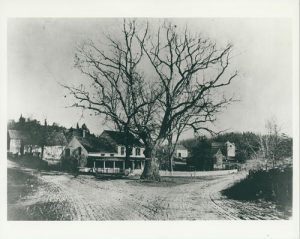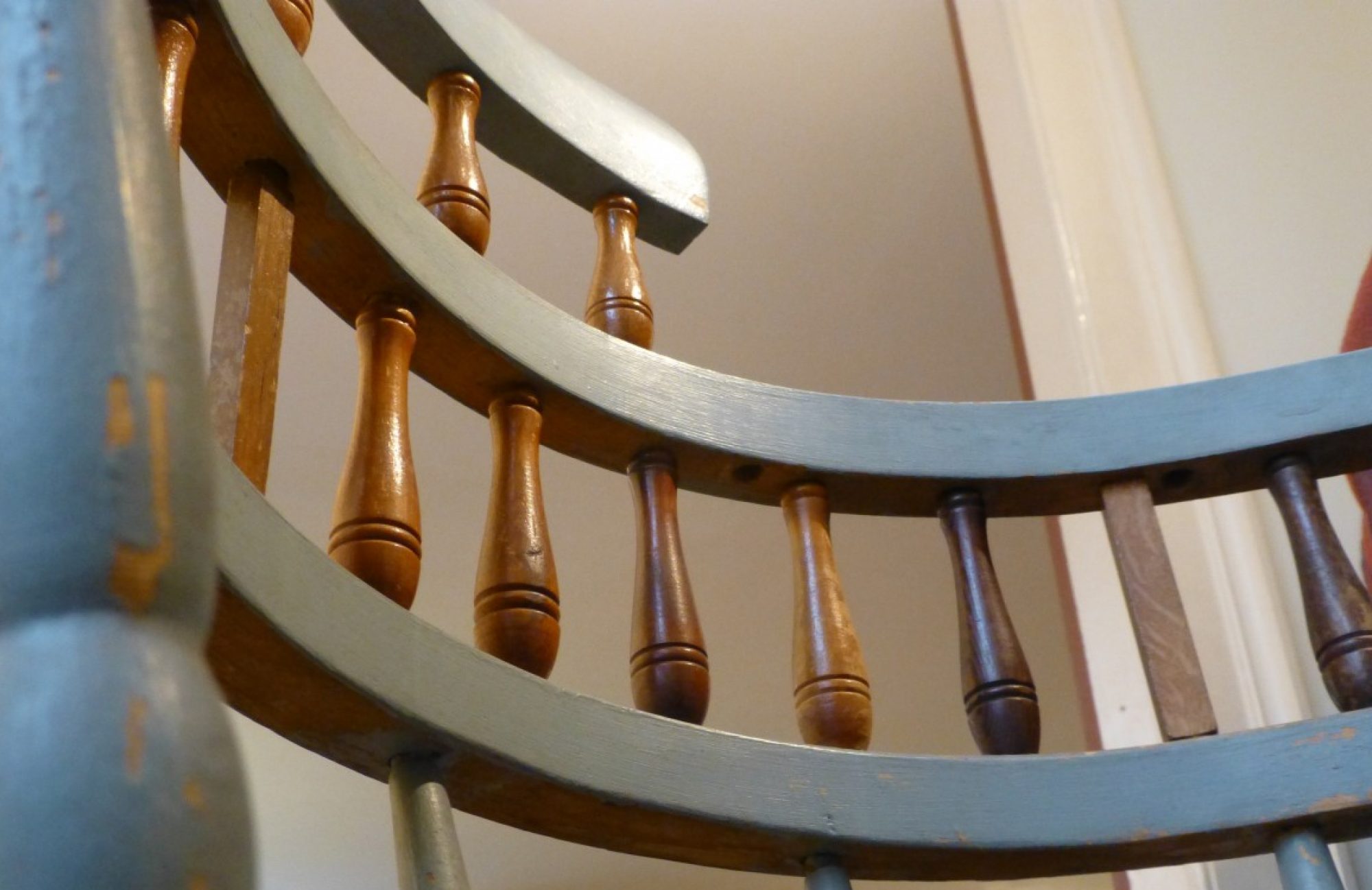
This spindle comes from the Charter Oak, which grew in Hartford, Connecticut and was a long-standing symbol American independence and resistance towards the British crown. It was estimated that the tree was over one thousand years old when it fell during a lightning storm in 1856 (1). Since its falling, wood form the Charter Oak has been highly sought-after, and much of it has been crafted into works of art, furniture, jewelry, and more (2). Henry Sheldon managed to obtain this piece of the Charter Oak from a Hartford resident by the name of F.L. Avery, who visited Henry Sheldon’s home on September 1, 1883 (3). However, as Sheldon notes in his journal and the museum acquistion ledger, he did not receive the piece of wood until September the 27th(4).


Perhaps one of the most storied spindles, the importance of the Charter Oak goes back to the early days of the American colonies. The unusually-large oak tree played an important role in Connecticut’s rebellion against the British crown. In 1662, King Charles the Second of England began collecting the charters of the North Eastern colonies in an attempt to consolidate power and create the colony of New England. (5) This meant that Connecticut was at risk of losing their charter and therefore their right to self-govern.(6) The English Crown made Sir Edmond Andros responsible for this new colony. He proceeded to go on a tour around the northeast collecting all the colonial charters.(7) Although it was just a formality, this symbolized the end of their autonomy and their dissolution into the grater colony of New England.(8) However, during a heated debate between Edmond and the people of Hartford, over the colony’s future status, the charter was taken.(9) It is rumored that during this discussion the candles in the meeting hall were blown out and when relit, the charter was gone.(10)
Captain Joseph Wadsworth stole the charter in the darkness and hid it within a hollow cavern of what was to be known from then on out as the Charter Oak. Unfortunately, this did not prevent Edmonds from revoking the state’s charter and making them a part of the greater New England colony.(11) However, the colony of New England did not last long, and in 1689, after King Charles’s rule had ended, Connecticut was once again allowed to govern themselves.(12)
The Charter Oak stood in Hartford for nearly another two hundred years and became a point of pride for both the city and the state of Connecticut. Upon its death a funeral-like ceremony was held for the tree, where people spoke of its great importance in Connecticut’s history.(13) People began taking pieces of the tree for themselves, as mementoes to commemorate the tree and ensure its legacy would not be forgotten.(14) The Charter Oak has been further memorized through works of poetry and literature such as such the 1857 poem “The Fall of The Charter Oak,” in which the tree is described almost as a guiding hand which protects people from “threatened liberty.”(15) Over time the Charter Oak has become an icon of American history. The Charter Oak’s importance is of the highest caliber, as it inspired generations of Americans to fight and defend the morals which this nation was founded upon.
-Pate Campbell ’20
Footnotes
1. “The Legend of the Charter Oak,” Connecticut History/CtHumanities: connecticuthistory.org/the-legend-of-the-charter-oak/.
2. Leslie Landrigan, “The Legend of the Charter Oak,” New England Historical Society (23 Apr. 2014): www.newenglandhistoricalsociety.com/legend-charter-oak/.
3.Henry Sheldon’s diary. Henry Sheldon Museum. Middlebury, Vermont.
4. Ibid.
5. Landrigan.
6. The Legend of the Charter Oak. Connecticut History. CtHumanities. connecticuthistory.org/the-legend-of-the-charter-oak/.
7. ibid
8. ibid
9. ibid
10. ibid
11. ibid
12. ibid
13. ibid
14. Landrigan.
15.L.H.S., “The Charter Oak: The Fall of the Charter Oak,” The Connecticut Common School Journal and Annals of Education 4, no. 1 (Jan. 1857): 7, 8.
See also: Robert F. Trent, “The Charter Oak Artifacts,” Connecticut Historical Society Bulletin 49 (1984): 125-39.
